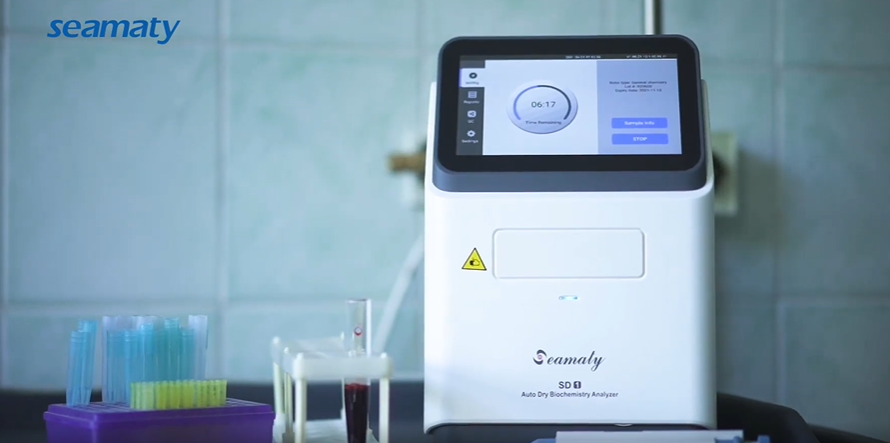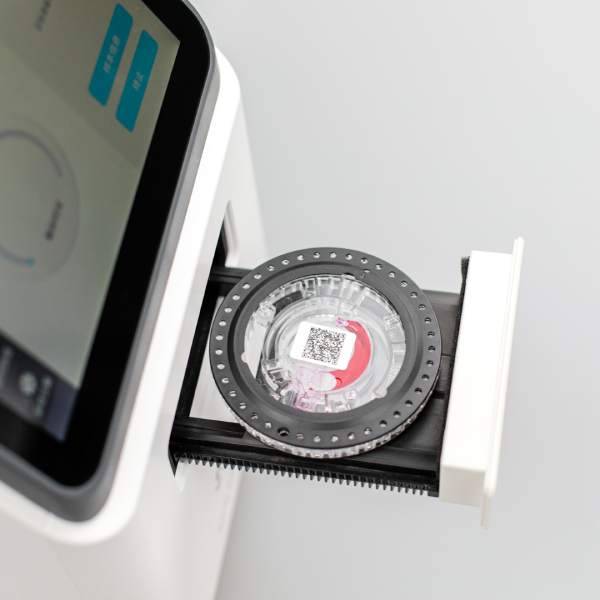A new automated analyzer has been developed that can help reduce the time required to analyze a sample. The analyzer provides accurate results in a fraction of the time it would take using other methods. This could be a valuable tool for researchers and scientists who need to quickly get results from their samples.

1. What is an automated analyzer and what does it do
An automated analyzer is a machine that automatically performs complex chemical analyses of substances. The machine does this by using a variety of techniques, such as atomic absorption spectroscopy, mass spectrometry, and chromatography. Automated analyzers are used in a variety of settings, including hospitals, labs, and manufacturing plants. They are often used to test for things like lead in water or to analyse the components of a new drug. Automated analyzers can perform hundreds or even thousands of tests per day, making them an essential tool for many industries.
2. Types of automated analyzers
Automated analyzers are used in many different settings, from small medical clinics to large reference laboratories. There are a wide variety of automated analyzers available, each designed to meet specific needs. For example, some analyzers are designed for high-volume testing, while others offer a more comprehensive range of tests. Below is a brief overview of some of the most common types of automated analyzers.
Clinical chemistry analyzers are used to perform a variety of tests on blood and other bodily fluids. These analyzers can be used to measure levels of glucose, lipids, electrolytes, and hormones. In addition, clinical chemistry analyzers often have the ability to perform basic urine tests.
Immunoassay analyzers are used to measure the level of specific proteins in blood or other bodily fluids. These proteins can be markers for diseases such as cancer or infectious diseases such as HIV.
Coagulation analyzers are used to measure clotting time in blood samples. This test is important for assessing risk factors for cardiovascular disease and stroke.
Haematology analyzers are used to count and characterise blood cells. This information can be used to diagnose a wide range of conditions, from anaemia to leukaemia.
3. The benefits of using an automated analyzer
Automated analyzers are machines that can automatically perform biochemical tests on blood or other samples. They are increasingly being used in healthcare settings as they can provide accurate results quickly and with little need for manual input. There are many benefits to using automated analyzers, including improved patient care, reduced workload for staff, and cost savings.
Patient care is improved as automated analyzers can provide quick and accurate results that can inform decision-making. For example, a patient who comes into hospital with a suspected heart attack can have their blood tested immediately to check for troponin levels. If the levels are high, this indicates that the patient is likely to have had a heart attack and can be treated accordingly. If troponin levels are not raised, this may rule out a heart attack and help to prevent unnecessary treatment.
Automated analyzers can also help to reduce workloads for staff as they require less manual input than traditional methods of testing. This frees up staff time so that they can concentrate on other tasks, such as caring for patients. In addition, automated analyzers are often more accurate than manual methods, meaning that there is less need for repeating tests or checking results. This can lead to increased efficiency and cost savings.
4. How to choose the right automated analyzer for your needs
When it comes to choosing an automated analyzer, there are a few things you need to keep in mind. The first is the type of analysis you need to perform. There are a variety of analyzers on the market, each designed for specific types of analysis. For example, if you need to analyse soil samples, you will need an analyzer that is specifically designed for that purpose.
Once you have determined the type of analysis you need to perform, you can narrow your search to analyzers that are designed for that specific purpose. The next thing you need to consider is the throughput. This is the number of samples that the analyzer can handle in a given period of time. If you have a high volume of samples to analyse, you will need an analyzer with a high throughput. Finally, you need to consider the cost. Analysers can vary widely in price, so it is important to find one that fits within your budget. By taking these factors into account, you can be sure to choose the right automated analyzer for your needs.
5. The cost of automated analyzers
Automated analyzers are instruments that perform chemical analysis on samples. They are used in a variety of settings, including hospitals, clinics, and laboratories. Automated analyzers can be very expensive, costing tens of thousands of dollars. H
owever, they can also save money in the long run by reducing the need for manual labour and increasing accuracy. In addition, automated analyzers often have a lower cost per test than manual methods. As a result, the decision to purchase an automated analyzer should be based on a careful cost-benefit analysis.
6. Maintenance and care of automated analyzers
Automated analyzers are a vital part of any laboratory, and it is important to ensure that they are well maintained and calibrated on a regular basis. There are a number of factors that need to be taken into account when carrying out maintenance on an automated analyzer, including the type of machine, the age of the machine, and the specific requirements of the laboratory.
It is important to consult the manufacturer's instructions before carrying out any maintenance, as this will ensure that the process is carried out correctly and safely. In general, automated analyzers should be cleaned on a daily basis, and more extensive cleaning and calibration should be carried out on a weekly or monthly basis. By following these basic guidelines, laboratories can ensure that their automated analyzers are always operating at peak efficiency.
Conclusion
Automated analyzers are a valuable tool for any biochemistry lab. They offer speed, accuracy and consistency that manual methods cannot match. By following the tips in this article, you can choose the right automated analyzer for your needs and get the most out of its performance.



